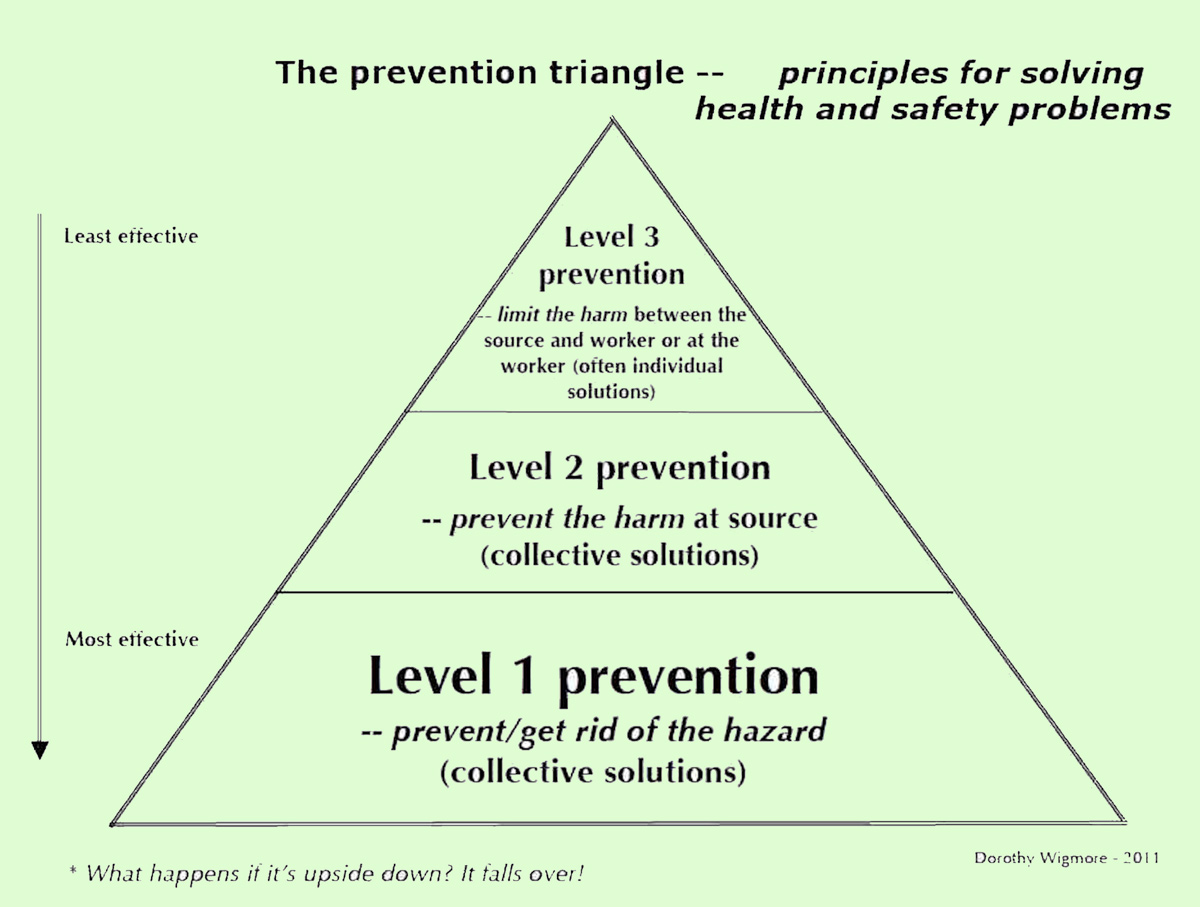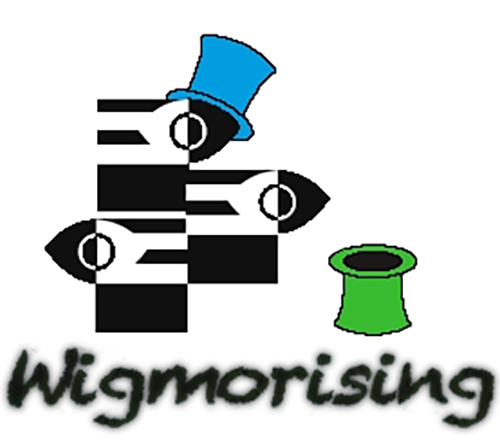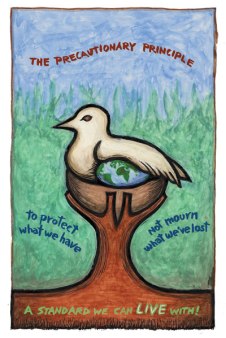Prevention principles
What’s behind the prevention triangle?

The triangle borrows two concepts from the environmental movement. Informed substitution is the principle about getting rid of toxic substances whenever a healthier and/or safer substance is available. Replacements are non-toxic or much less hazardous materials. It also describes changes about how things are done, using a different technology or re-organising the task to reduce or get rid of hazards.
For more, see an explanation of the term at the US Occupational Safety and Health Administration’s Transitioning to safer chemicals. Examples of the term in practice are found at Clean Production Action, the Massachusetts Toxics Use Reduction Institute, and the Canadian Tools for informed substitution: How do you find safer chemicals for the workplace?
The precautionary principle — “better safe than sorry” — is part of several environment and health and safety laws. The idea is that there must be proof that something is not harmful before it is used, rather than using workers or the community as guinea pigs and only taking action when problems appear. For more information, see the European Environment Agency’s first Late lessons from early warnings and their second report by the same name. The Canadian Environmental Law Association also has written about the principle, partly because the term is used in environment laws in Canada and Europe, and United Nations’ declarations (e.g., the 1992 Rio Declaration). The 1998 Wingspread statement is more comprehensive than most legal definitions.
Health and safety specialists have used the word “controls” to describe changes or solutions that reduce exposure but don’t get rid of the hazard. But their language is changing to emphasise prevention as opposed to putting up with a hazard. The Belgian health and safety law offers a very useful way to do this, with levels of prevention (see http://www.meta.fgov.be).
Level 1 prevention is best. It gets rid of a hazard or avoids introducing a new one (when you use the precautionary principle). This is where substitution using non-toxic alternatives is most effective. Public health practitioners would call this primary prevention.
Level 2 prevention (a.k.a. engineering solutions or controls at the source) limits the hazard at its source (reducing its spread). The hazard is still there but ways to prevent harm include:
- ventilation enclosing the hazard, taking it
- all out of the workplace (without damaging
- the environment);
- enclosures to reduce noise levels;
- isolating the hazard or the people who may
- be exposed to it; and
- wet methods (with dusts).
Level 3 prevention only limits or reduces harm by putting something between the worker and the hazard source. Changes or “controls” along the path between the hazard and workers, include:
- local ventilation that does not enclose the hazard;
- general ventilation;
- mechanical guards/devices; and
- some administrative controls (e.g. breaks).
At the worker (controls at the worker), Level 3 prevention includes personal protective equipment/clothing (PPE) and:
- some administrative activities (e.g. rotating workers, because it just spreads the hazard around and may even make it worse for some, especially if hazards to back are involved);
- work procedures, training and supervision, emergency plans;
- housekeeping, repair and maintenance programmes, and hygiene practices/facilities; and
- things to take care of yourself (especially when you’re stressed).

These solutions are the least acceptable way to try to fix a problem, although there are times when they’re needed.
For information about PPE for women, see The same, only different: fitting the job to women’s needs from two 2015 European presentations.

